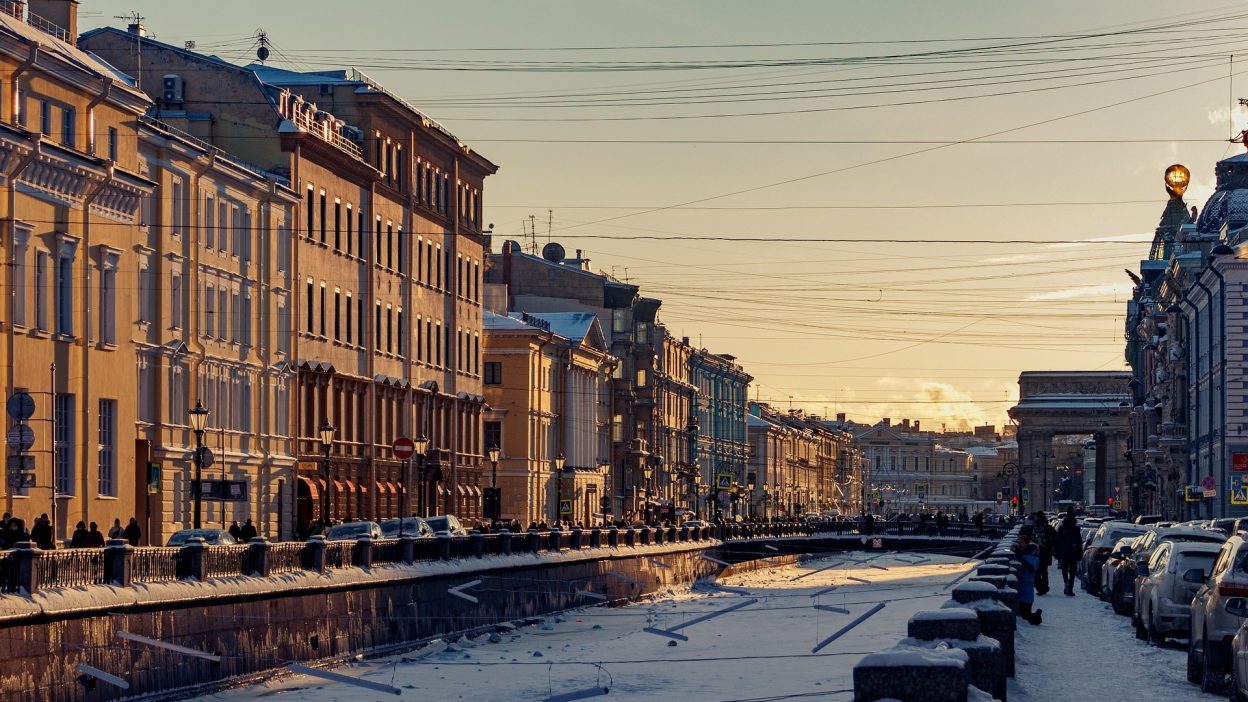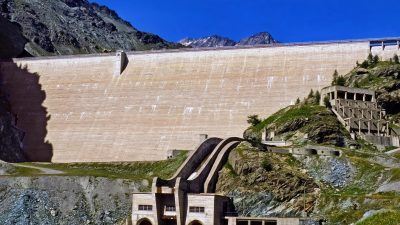Stalin’s Manufactured Famine: The Untold Truth Behind the Soviet Union’s Deadliest Catastrophe (1930–1933)
The Soviet famine of 1930–1933 ranks among the most devastating events of the 20th century, with an estimated death toll ranging between 5 and 10 million. Unlike famines triggered by natural causes such as drought or crop failure, this disaster was primarily the outcome of harsh policies enforced by Joseph Stalin’s government. The aggressive push for agricultural collectivisation, excessive grain seizures, and the violent crackdown on peasant uprisings transformed food scarcity into a widespread humanitarian crisis. While Soviet officials claimed the famine was an inevitable side effect of rapid industrialisation, numerous historians view it as a deliberate act of brutality—intended to subdue the rural populace, eliminate dissent, and consolidate state authority over food supplies.
The famine’s toll was especially severe in Ukraine, Kazakhstan, and certain regions of Russia. Entire communities vanished as starvation, illness, and harsh conditions claimed countless lives. Astonishingly, grain continued to be exported internationally while millions within the Soviet Union perished, a policy so callous that it prompts questions about its underlying motives. Desperation drove survivors to extreme measures—consuming grass, tree bark, and, in some cases, resorting to cannibalism to survive. Instead of offering aid, Stalin’s regime intensified its control, isolating afflicted areas and labeling the starving as “state enemies.” The global community remained largely ignorant of the catastrophe, as the Soviet government employed a systematic strategy of misinformation and suppression.
Was this famine merely a catastrophic policy misstep, or was it an intentional act of genocide? The situation in Ukraine, where the famine is known as the Holodomor, intensifies this debate. Some experts assert that Stalin deliberately targeted Ukrainians to dismantle nationalist sentiments and reinforce Soviet control. Others argue that while the policies were catastrophic, they were not explicitly genocidal. Regardless of intent, one undeniable truth persists: the Soviet Union’s actions were directly responsible for the deaths of millions, and its failure to address or mitigate the famine stands as one of history’s gravest injustices.
The Soviet Union in the Early 1930s: A Nation on the Edge
By the end of the 1920s, Joseph Stalin had firmly established his authority over the Soviet Union, initiating a series of drastic economic measures designed to propel the nation into industrial supremacy. The First Five-Year Plan (1928–1932) signaled the start of this ambitious overhaul, emphasizing swift industrialisation and the compulsory collectivisation of agriculture. Stalin perceived private farming as incompatible with socialist principles and aimed to replace independent peasants with expansive, state-run collective farms (kolkhozes and sovkhozes). This policy proved especially catastrophic in agrarian areas like Ukraine, Kazakhstan, the Volga region, and the North Caucasus, where opposition to collectivisation was met with severe crackdowns. Authorities confiscated land, livestock, and grain, labeling affluent peasants (kulaks) as class foes and exiling or executing thousands. By 1930, more than a million peasant households had been coerced into collectivisation, resulting in widespread disorder, declining productivity, and escalating food scarcity.
Signs of an approaching famine became evident as early as 1931, with accounts of poor harvests, insufficient grain reserves, and widespread hunger in rural communities. Despite these warnings, Stalin and his advisors ignored the crisis, attributing the agricultural failures to “sabotage” by kulaks and anti-Soviet elements rather than acknowledging the flaws in their own policies. Soviet officials persisted in imposing unrealistic grain quotas, ruthlessly seizing food from already starving villages. In areas like Ukraine and Kazakhstan, entire populations were stripped of their food supplies while grain was hoarded or shipped overseas to finance industrial ventures. By late 1932, the consequences of these measures had reached a devastating peak, with millions on the brink of starvation. Yet, the Soviet leadership remained unyielding, refusing to offer aid or alter its course. This set the scene for one of the most catastrophic man-made famines in human history
Forced Collectivisation: Stalin’s Assault on His Own People
When Joseph Stalin initiated his forced collectivisation campaign in 1929, it was presented as a crucial move toward socialist advancement. In truth, it was a reckless attack on the core of Soviet agriculture. Private farms, which had sustained the nation for generations, were confiscated and consolidated into vast state-run collective farms (kolkhozes and sovkhozes). Peasants were deprived of their land, livestock, and tools, forcing them into subservience under strict state supervision. The most prosperous farmers, labeled kulaks, were declared state enemies and subjected to execution, imprisonment, or deportation to distant labor camps. In regions like Ukraine, Kazakhstan, the Volga region, and the North Caucasus, opposition was met with ruthless suppression—villages that resisted were encircled by Soviet troops, their food supplies seized, and their inhabitants abandoned to starvation. By 1931, millions of peasants had been coerced into collectivisation, yet agricultural productivity had sharply declined. The ambitious plan for state-managed farming had devolved into a chaotic disaster, plagued by mismanagement, corruption, and inefficiency.
As famine gripped the nation in 1932 and 1933, the Soviet government not only ignored the crisis but actively exacerbated it. Grain requisitioning quotas were raised despite failing harvests and dwindling food reserves. Soviet officials descended on starving villages, taking whatever grain remained and leaving communities with nothing to survive on. In Ukraine, defiant villages were placed on “blacklists,” denying them access to food, trade, and assistance, effectively condemning them to death. Simultaneously, the regime continued exporting grain internationally to demonstrate Soviet economic prowess, even as millions perished from hunger at home. This famine was not simply a policy misstep—it was a state-orchestrated atrocity, fueled by Stalin’s fixation on control and his callous indifference to human suffering.
Stalin’s Policies: Incompetence or Intentional Genocide?
The role of Joseph Stalin in the 1930–1933 Soviet famine remains one of the most hotly debated issues in modern history. Was it a disastrous policy failure, or was it a premeditated act of mass extermination? The evidence points to Stalin and his administration not merely being negligent but actively involved in the deaths of millions. The aggressive collectivisation of agriculture, paired with harsh grain confiscation quotas, stripped entire regions of their food supplies. Even as Soviet officials were informed of widespread starvation in Ukraine, Kazakhstan, and the Volga region, the government did not ease its demands. Instead, it intensified its control, branding starving peasants as “saboteurs” and state enemies. Rather than alleviating the famine, Stalin exploited it to eliminate dissent and consolidate his authoritarian rule. If not an outright act of genocide, it was alarmingly close.
The kulaks, once prosperous farmers, became the primary targets of Stalin’s wrath. His regime viewed them as a barrier to collectivisation and unleashed a merciless campaign to eliminate them. The state framed “de-kulakisation” as essential for achieving socialism, but in reality, it meant mass arrests, deportations, and executions. Families were uprooted from their homes and sent to the frigid Gulag labor camps of Siberia, where many died. In Ukraine, the epicenter of the famine, entire villages were blacklisted and denied access to food, ensuring their slow and painful demise. Soviet authorities patrolled starving communities, seizing hidden food reserves and blocking escape routes. The message was unmistakable: starve, endure, or surrender.
Despite the widespread death and suffering, the Soviet government refused to admit the famine existed. International journalists and Soviet sympathizers, either misled or complicit, perpetuated the falsehood that no famine was occurring. The notorious New York Times reporter Walter Duranty even claimed there was “no actual starvation” in Ukraine, despite overwhelming evidence proving otherwise. Meanwhile, the Soviet Union continued exporting grain, using food as a political tool rather than a lifeline. Stalin did not merely allow his people to starve—he orchestrated their suffering and then concealed the truth beneath layers of propaganda. The famine was not just a tragedy; it was a state-directed crime against humanity, one that Stalin ensured would be erased from history.
Ukraine and the Holodomor: Genocide or Unintended Tragedy?
Among the regions ravaged by the Soviet famine of 1930–1933, Ukraine endured the greatest losses, with an estimated 3.5 to 5 million deaths. But was this an inevitable outcome of collectivisation, or was it a deliberate act of genocide? Unlike other areas of the Soviet Union, where famine stemmed from economic mismanagement, Ukraine was specifically targeted and isolated. Soviet officials imposed stricter grain requisition quotas on Ukrainian farmers, seizing even seed grain, which guaranteed no future harvests. Stalin’s government blockaded entire villages, preventing residents from escaping to find food. Those caught taking even a small amount of grain risked execution or deportation. Meanwhile, the Soviet Union continued to export large amounts of grain internationally, demonstrating that the famine was not caused by a lack of food but by a brutal strategy of domination and oppression.
The term Holodomor, meaning “death by starvation,” is now commonly used to describe this chapter in Ukrainian history, and many experts argue that it qualifies as genocide under international law. The famine disproportionately impacted Ukrainians, aligning with Stalin’s broader campaign to suppress Ukrainian nationalism and cultural identity. Ukrainian intellectuals, religious leaders, and political figures were systematically arrested, executed, or exiled. Churches were demolished, the Ukrainian language was marginalized, and any discussion of the famine was prohibited for decades. In contrast, while Kazakhstan and parts of Russia also suffered under collectivisation, they were not intentionally denied aid or subjected to such severe repression. This stark disparity has led many to believe that the Holodomor was not merely a tragedy—it was a calculated effort to obliterate Ukraine as a distinct nation, cementing it as one of Stalin’s most horrific crimes against humanity.
Kazakhstan: The Overlooked Famine That Claimed a Third of Its People
While Ukraine’s Holodomor is well-documented, the catastrophic famine in Kazakhstan (1930–1933) has been largely forgotten. Under Stalin’s harsh collectivisation policies, Kazakhstan’s nomadic herders were forcibly settled, their livestock seized, and their traditional way of life dismantled. The Kazakh famine, unlike Ukraine’s, was not solely about grain confiscation—it was a comprehensive attack on the economic and cultural fabric of the Kazakh people. Approximately 1.5 million Kazakhs—nearly 38% of the ethnic population—died, making it the most devastating famine relative to population size in Soviet history. As hunger spread, desperate Kazakh families fled their homes in search of food, triggering a mass exodus. Hundreds of thousands escaped to China, Afghanistan, and nearby Soviet republics, though many perished during the journey. The Kazakh identity was decimated, as Stalin’s policies turned them into a minority in their own land.
Other Soviet regions, such as the Volga region, the North Caucasus, and parts of Russia and Belarus, also endured famine, but none suffered as severely as Ukraine and Kazakhstan. In Russia, certain areas experienced extreme hunger, but as the political heart of the Soviet Union, they were not targeted for starvation to the same degree. In Belarus, grain seizures caused widespread food shortages, but the death toll was not as high. In the North Caucasus, where ethnic groups like the Cossacks and Chechens resisted Soviet authority, food was used as a weapon of ethnic repression, mirroring the tactics employed in Ukraine. The famine was not merely a side effect of collectivisation—it was a deliberate strategy to quash dissent, erase cultural identities, and solidify Soviet dominance over defiant regions. Despite this, the Kazakh famine remains one of the least recognized genocidal tragedies of the 20th century, obscured by Soviet propaganda and historical neglect.
The Death Toll and Human Suffering: A Nation in Despair
- Estimates of Total Deaths
The Soviet famine of 1930–1933 stands as one of the most catastrophic humanitarian disasters in history, with death tolls estimated between 5 to 10 million people. The heaviest losses occurred in Ukraine (3.5 to 5 million deaths), where the famine is now acknowledged as the Holodomor, potentially constituting genocide. Kazakhstan lost approximately 1.5 million people, representing 38% of its ethnic Kazakh population, making it the hardest-hit region proportionally. Russia’s Volga region, the North Caucasus, and parts of Belarus also endured significant casualties, though the numbers were somewhat lower than in Ukraine and Kazakhstan. The exact death count remains disputed due to Soviet efforts to conceal the truth, including the destruction of records and decades of censorship. What is certain, however, is that millions of men, women, and children died—not only from starvation but also from disease, exhaustion, and Soviet oppression.
- Eyewitness Accounts of Mass Starvation
Survivors and foreign observers provided chilling accounts of entire villages becoming ghost towns, with streets strewn with emaciated bodies. In Ukraine, Soviet officials enforced blacklists on starving areas, cutting off access to food and trade. Many peasants collapsed in fields, too frail to continue searching for sustenance. Witnesses recounted mothers holding their dying children, powerless to save them. In Kazakhstan, nomadic families, stripped of their livelihoods by forced collectivisation, roamed the countryside in search of food, only to perish in the vast steppes. Foreign diplomats and journalists who covertly visited famine-stricken zones described train stations filled with skeletal figures, too weak to move, waiting for aid that never arrived. Meanwhile, the Soviet government denied the crisis, labeling anyone who spoke out as “enemies of the state.”
- The Rise of Cannibalism and Extreme Survival Measures
As the famine intensified, desperate survival tactics emerged. Eyewitness testimonies and NKVD (Soviet secret police) records confirm that cannibalism became widespread, particularly in Ukraine and Kazakhstan, where starvation pushed people to the edge of insanity. In some cases, parents were found consuming the flesh of their deceased children to survive—a reality so horrifying that even Soviet officials documented it, despite their efforts to suppress famine reports. Entire families chose suicide together, unable to bear the slow, torturous death of hunger. Starving individuals traded their last belongings for scraps of food, while others resorted to eating tree bark, grass, and rodents. Despite these unimaginable horrors, the Soviet state continued seizing grain, displaying complete indifference to the suffering of its people. This was not merely a failure of policy—it was a state-sanctioned atrocity, condemning millions to a fate worse than death.
The Soviet Cover-Up: Deception, Propaganda, and Silence
While millions across the Soviet Union faced starvation, Stalin’s regime engineered one of history’s most extensive cover-ups. The Soviet government not only refused to acknowledge the famine but actively worked to obliterate any trace of its existence. Local officials were prohibited from using the term “famine,” and any discussion of starvation was labeled anti-Soviet propaganda—a crime that could lead to imprisonment or execution. Reports of food shortages were either altered or ignored, while the regime continued to export grain to foreign markets, creating the illusion of prosperity. Foreign visitors were taken on carefully curated tours of staged villages, where healthy, well-fed peasants were forced to participate in an elaborate hoax to mislead outsiders. The world remained unaware, and millions died in silence, victims not only of hunger but of state-sponsored deceit.
Western journalists played a disturbing role in spreading Soviet falsehoods. The most notorious among them, Walter Duranty, the Moscow correspondent for The New York Times, consistently denied the famine’s existence, writing articles that claimed Soviet agriculture was flourishing. Despite overwhelming evidence of mass starvation from independent sources, Duranty dismissed these accounts as “exaggerations” and “anti-Soviet propaganda.” His lies were so convincing that they shaped Western policies, blocking international efforts that might have saved countless lives. In contrast, courageous journalists like Gareth Jones and Malcolm Muggeridge, who risked everything to reveal the truth, were suppressed, mocked, and discredited. The cover-up was so effective that even decades later, the full extent of the famine remains contested, buried under Soviet propaganda and historical neglect. Stalin didn’t just kill millions—he ensured their suffering would be erased from memory, cementing the famine as one of the most heinous crimes of the 20th century.
The Aftermath: A Legacy of Silence and Repression
Even after millions had died, the Soviet Union steadfastly refused to acknowledge the famine, treating it as a non-event in its official history. Stalin’s regime continued to claim that any food shortages were caused by “poor weather and sabotage by state enemies,” rather than admitting to the deliberate policies that caused mass starvation. Soviet archives were sealed, records were destroyed, and anyone who dared to speak the truth faced imprisonment, execution, or exile to the Gulag. In Ukraine, survivors who tried to preserve memories of the Holodomor were silenced, their accounts dismissed as anti-Soviet propaganda. Even during the Khrushchev era (1953–1964), discussions of the famine were strictly banned, and it wasn’t until the final years of the Soviet Union that some records were partially declassified. By then, decades of state-controlled narratives had ensured that millions of victims remained nameless, their suffering erased from Soviet history.
To this day, the legacy of the 1930–1933 famine remains deeply contentious. In Ukraine, the famine is widely recognized as genocide, officially termed the Holodomor, and commemorated annually as one of the darkest periods in Ukrainian history. More than 20 countries, including the United States, Canada, and most of Europe, have officially recognized the famine as a deliberate act of genocide by Stalin’s regime. However, Russia continues to deny this, insisting that the famine was an unintended consequence of economic mismanagement rather than a calculated policy of extermination. Under Vladimir Putin’s leadership, any comparison between Stalin’s actions and modern authoritarianism is discouraged, and efforts to fully acknowledge the famine remain suppressed. This ongoing denial reflects a broader unwillingness to confront the Soviet Union’s most horrific crimes, ensuring that Stalin’s carefully constructed web of lies endures—even decades after his death.
Conclusion: A Preventable Tragedy
The Soviet famine of 1930–1933 was not an inevitable natural disaster—it was a man-made catastrophe, driven by Stalin’s ruthless policies of forced collectivisation, grain confiscation, and political oppression. Millions of lives were lost not because of a lack of food, but because the state deliberately seized grain, suppressed resistance, and refused to offer relief. The famine hit hardest in Ukraine and Kazakhstan, where entire populations were targeted, isolated, and left to die. Meanwhile, Soviet propaganda concealed the suffering, ensuring that both the Soviet people and the international community remained unaware of the horrors taking place. Had Stalin’s regime chosen to value human life over ideological control, millions could have been saved—but instead, the government wielded famine as a weapon, punishing those it labeled as enemies of the state.
The question of accountability remains contentious. Was Stalin alone responsible, or was the entire Soviet system complicit? While some claim the famine resulted from flawed economic policies, the evidence strongly indicates that it was a deliberate act of repression. Stalin’s policies worsened the famine, crushing dissent while continuing to export grain abroad, even as millions perished. The blacklisting of Ukrainian villages, the brutal suppression of Kazakh nomads, and the silencing of famine reports all point to a regime that viewed starvation not as an unintended consequence, but as a tool of control. The Soviet Union’s systematic cover-up and decades of denial further underscore the criminal nature of this atrocity—not merely a policy failure, but a crime against humanity.
Today, the world must remember the Soviet famine of 1930–1933, not only as a historical tragedy but as a cautionary tale. Authoritarian regimes thrive on secrecy, deception, and the suppression of truth—and Stalin’s famine stands as one of the starkest examples of how unchecked power can lead to mass death and suffering. Recognizing the Holodomor as genocide is not just about honoring the victims; it is about ensuring that such atrocities are never repeated. Yet, as modern Russia continues to deny the famine’s true nature, it is evident that history is still being distorted for political gain. The truth must not be buried again—only by confronting the full horror of Stalin’s famine can we ensure that the world learns from its darkest mistakes.
References:
“Holodomor | Facts, Definition, & Death Toll”
“Soviet famine of 1930–1933”
The Soviet Great Famine, 1932–33∗
The Kazakh Famine of the 1930s
YT links
How Stalin starved Ukraine
The Holodomor: Ukraine’s Soviet Terror-Famine
Stalin’s Most Deadly Famine




